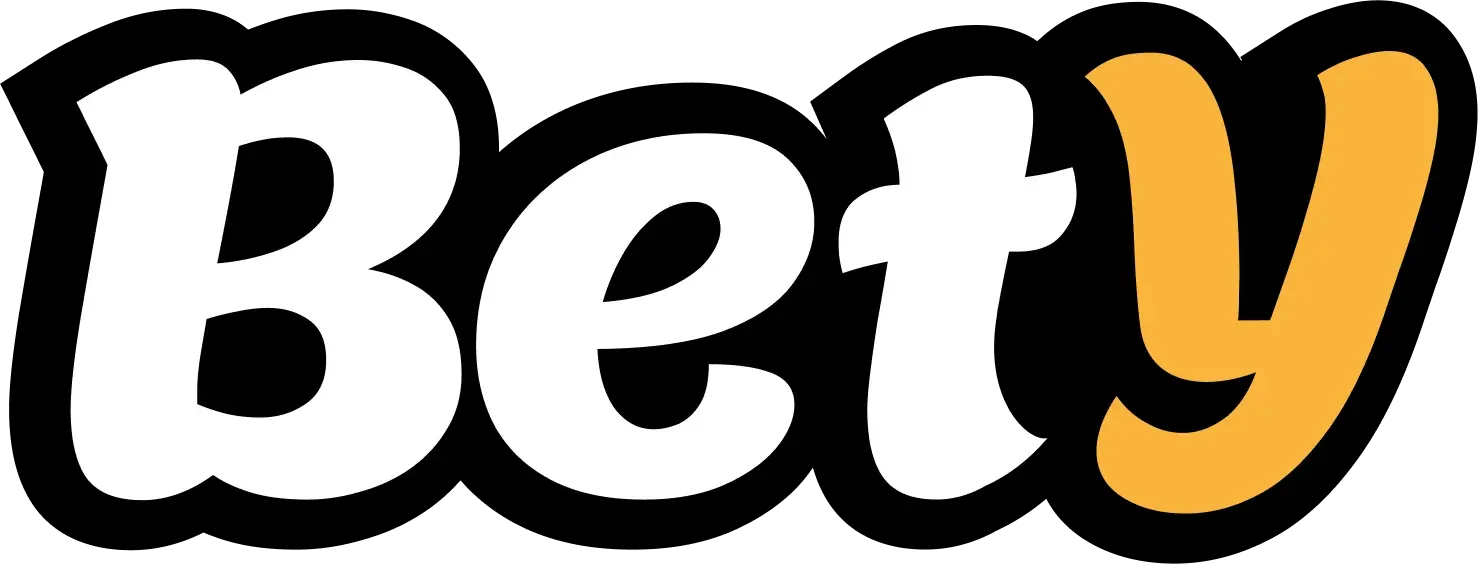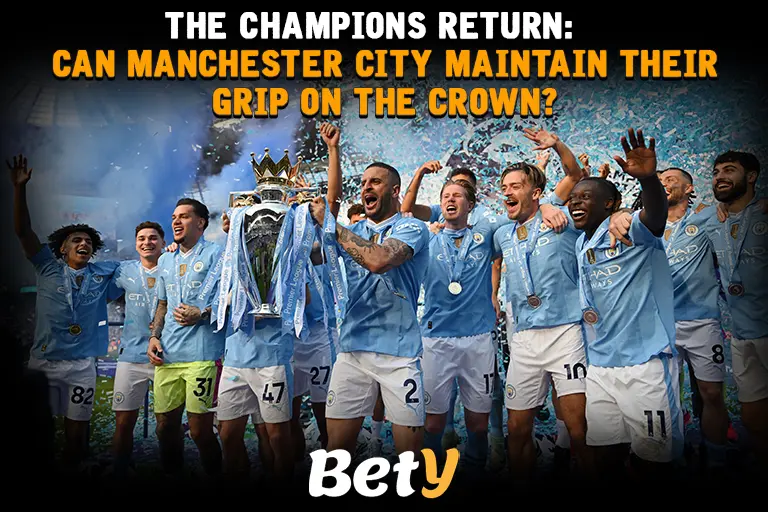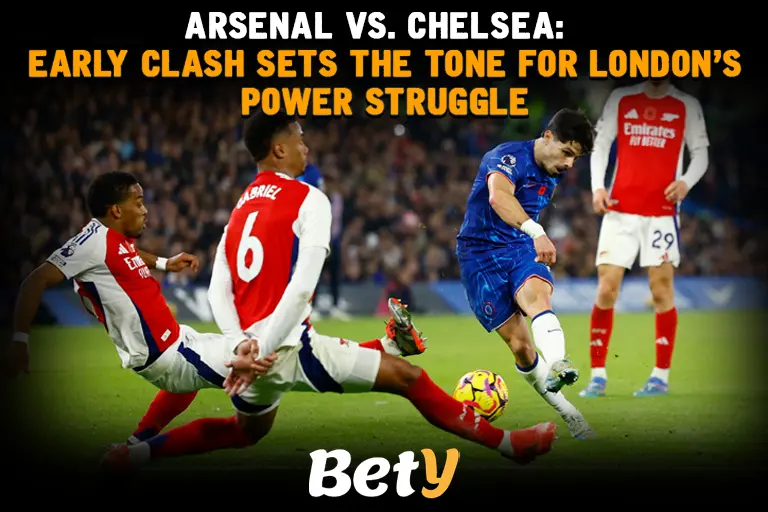Table of Contents
ToggleBrief recap of Manchester City’s dominance last season
This era of supremacy has redefined the standard for top-flight English football, and many now consider this City side among the greatest in Premier League history.
Defending the title going into the EPL 2025 Season
This season presents a fresh set of challenges. Rivals like Arsenal, Liverpool, and Manchester United have strengthened in the transfer market, and the fixture calendar is as punishing as ever. The Community Shield has already hinted at new tactical wrinkles and emerging threats. City, meanwhile, will be juggling ambitions across the Premier League, domestic cups, and Europe once again.
Can they sustain this success amid growing challenges?
Injuries, fixture congestion, and the psychological fatigue of sustained success are all real threats. Can key players like Rodri, De Bruyne, and Haaland maintain their form across yet another demanding campaign? And will City’s new signings adapt quickly enough to make an impact?
The Premier League is as unpredictable as ever — and if you think you can predict who will rise to the top this season, why not put your instincts to the test?
👉 Try your luck with BETY Sportsbook — where you can bet on outright winners, top scorers, and match-by-match outcomes. Whether you’re backing City for a fifth straight title or betting on a bold upset, BETY lets you be part of the action.
Key ins
In addition, a surprise late-window signing came in the form of Lamine Traoré, a pacey winger from the Belgian league who impressed during preseason with his fearless dribbling and work rate.
Key Outs
City also loaned out several fringe and academy players, including James McAtee and Callum Doyle, to gain first-team experience elsewhere. While no single departure appears to weaken the squad significantly, the exits reflect Guardiola’s continued emphasis on evolution and maintaining a lean, motivated core.
Youth Integration
Rico Lewis, already a known quantity, continues to play a hybrid role across midfield and defense, offering Guardiola rare tactical fluidity. Additionally, young striker Adedayo Ogunbote has trained regularly with the senior squad and could earn minutes in domestic cup competitions.
The club’s focus on youth development has ensured that even with minimal first-team turnover, there’s internal competition and energy within the squad.
Has the squad improved or weakened overall?
The real improvement may not be in sheer quality, but in squad balance and injury mitigation. By subtly strengthening problem areas without disrupting the team’s cohesion, Guardiola has positioned City to remain competitive across all fronts.
Compared to their rivals, City once again enter the season as the most well-rounded squad in England—if not Europe.
Want to stay ahead of the curve this season? BETY delivers smarter football insights, data-driven analysis, and tactical breakdowns you won’t find anywhere else. Whether you’re tracking new signings, analyzing matchday form, or simply staying in tune with Pep’s next evolution, BETY keeps you one step ahead.
👉 Join BETY today and follow the game like a manager — not just a fan.
Pep Guardiola’s Tactical Evolution
How Pep adapted tactics last season
Additionally, Guardiola leaned more heavily on rotational flexibility in midfield. Bernardo Silva, Phil Foden, and Mateo Kovačić frequently interchanged roles, allowing City to overload central areas and manipulate space. The manager also occasionally employed a double-pivot, particularly in tougher fixtures, adding defensive stability while freeing up Kevin De Bruyne or Julian Álvarez in more advanced roles. Another evolution was his use of Erling Haaland as a more complete forward. While still primarily a goal threat, Haaland began to drop deeper to link play, helping City’s overall buildup and allowing wide players to exploit the vacated space.
Any expected changes based on preseason hints
Another notable change is the reintroduction of width, especially through natural wingers. The use of young wide players like Oscar Bobb and possibly new signings (or academy promotions) suggests Guardiola might return to stretching the pitch horizontally to destabilize compact blocks. There’s also an increased focus on high pressing and transitional traps, as seen in preseason friendlies. City appear sharper in regaining possession higher up the pitch, with an emphasis on quick vertical passes once the ball is recovered — signaling a potential shift toward a slightly more direct and aggressive approach when transitioning from defense to attack.
How opponents might try to counter City this season
However, bolder teams may opt to target City’s inverted full-backs and central overloads, pressing high and wide to disrupt build-up from the flanks — especially if City overcommits in midfield. Quick counters down the channels, exploiting the spaces left by advanced full-backs, will remain a consistent threat.
Moreover, with the increasing physical demands of Guardiola’s setup, opponents might try to exploit fixture congestion and fatigue, particularly in the second half of the season. Rotating press intensity and capitalizing on rare unstructured moments in City’s defense could offer windows of opportunity.
Squad Depth and Fitness
Overview of City's squad strength in each position
Midfield remains City’s strongest area in terms of both depth and quality. Rodri is indispensable in the holding role, while players like Mateo Kovačić, Bernardo Silva, Phil Foden, and a hopefully fully fit Kevin De Bruyne give Guardiola a range of options to dominate possession and dictate tempo. Young talent like Rico Lewis and academy prospects also provide flexibility, especially in hybrid midfield-defensive roles.
Up front, Erling Haaland is the undisputed focal point, supported by a versatile cast including Jack Grealish, Jeremy Doku, Julian Álvarez, and potentially emerging players like Oscar Bobb. Each brings different qualities—whether it’s pace, creativity, or direct goal threat—allowing Guardiola to tailor his attack based on opposition and game state.
Players returning from injury
Jack Grealish and Nathan Aké, both of whom struggled with fitness toward the end of last season, are also expected to return to full sharpness. Their availability will be crucial, especially with the fixture congestion across four competitions. Meanwhile, John Stones, who had intermittent injury concerns last campaign, appears to be building fitness steadily and could reassert his key role as a midfield-converting center-back.
Depth compared to rivals like Arsenal, Liverpool, or Chelsea
Arsenal’s starting XI is strong, but their drop-off in quality from first-team to bench—especially in central defense and attack—is more noticeable compared to City. Liverpool, despite an exciting midfield rebuild, still lack the defensive depth and midfield control that City have perfected. Chelsea, under Enzo Maresca, are still in transition and have a younger, less experienced squad that may take time to gel.
City’s depth doesn’t just lie in numbers, but in the multi-functional nature of their players. Bernardo Silva, Stones, Lewis, and Álvarez can all play in several positions without compromising system integrity. This versatility allows Guardiola to rotate effectively without losing cohesion—something few rivals can match.
Main Competitors for this Season
Arsenal: Strong transfer market activity and young core
Their young core — including Bukayo Saka, William Saliba, and Martin Ødegaard — has matured and gained big-game experience, making them even more dangerous. If Arsenal can maintain consistency in the second half of the season — something that eluded them previously — they could pose City’s most sustained threat yet.
Liverpool: Revamped midfield, Klopp’s tactical tweaks
Liverpool’s transformation under Jürgen Klopp has accelerated, with a reimagined midfield and tweaks to their tactical identity. The departures of aging midfielders have made way for dynamic younger profiles, giving Liverpool more energy, pressing intensity, and ball control in the center of the pitch.
Klopp has also experimented with a hybrid back-three system, allowing Trent Alexander-Arnold to step into midfield more fluidly. This has added a new layer to their build-up play and creativity. If their forward line — led by Mohamed Salah and supported by Luis Díaz and Darwin Núñez — clicks consistently, Liverpool could re-establish themselves as a genuine title contender.
Chelsea: New coach or system; high talent ceiling
With a new manager at the helm (Enzo Maresca or another), Chelsea are once again a tactical wildcard. Despite underperforming in recent seasons, their squad is filled with high-potential young players — Enzo Fernández, Moisés Caicedo, and Cole Palmer among them — all of whom could flourish under the right system.
The big question is consistency. Chelsea have talent in abundance, but whether they can find rhythm, chemistry, and clarity under a new system remains to be seen. If they do, they may not just return to the top four, but also play spoiler in the title race.
Outside Threats: Newcastle, Tottenham, or Manchester United resurgence
Tottenham Hotspur, under Ange Postecoglou, showed exciting flashes of attacking football last season. With a full year under the new system and better defensive organization, they could make a legitimate push for Champions League qualification or more.
Manchester United, meanwhile, remain an enigma. Despite flashes of individual brilliance, inconsistency and tactical instability held them back last season. However, with key injuries behind them and potential additions in midfield or attack, a resurgence under Erik ten Hag cannot be ruled out — particularly if they start the campaign strongly.
Fixture Congestion and Champions League Impact
Analysis of City’s packed schedule due to multiple competitions
Below is a snapshot of City’s potential fixture load across competitions:
| Competition | Estimated Matches | Timeline |
|---|---|---|
| Premier League | 38 | Aug 2025 – May 2026 |
| UEFA Champions League | 13 (Group + Knockouts) | Sept 2025 – May 2026 |
| FA Cup | 4-6 | Jan 2026 – May 2026 |
| EFL Cup | 2-5 | Sept 2025 – Feb 2026 |
| FIFA Club World Cup | 2-4 | Dec 2025 (Midseason) |
| Totel Potential Matches | 60+ |
By late winter, City could be playing every three to four days for months on end. The risk of burnout — physical and mental — becomes a major factor, particularly for key players like Rodri, Haaland, and De Bruyne.
Will UCL ambitions drain focus or energy from domestic campaigns?
The Champions League remains a top priority for Guardiola, especially as City aim to win it for a second or even third time. While their tactical depth often allows them to compete on multiple fronts, the later UCL stages (March–May) frequently overlap with decisive Premier League fixtures. Last season, for example, City’s tight run-in saw critical league matches sandwiched between high-stakes European ties.
The deeper City go in the UCL, the greater the potential for domestic drop-offs — even if marginal. Squad energy management becomes crucial, particularly against domestic rivals with fewer distractions or shorter fixture lists. Balancing the ambition for European dominance with domestic consistency is a knife-edge task, and a few missteps in spring could define the season.
Pep's rotation strategy: asset or liability?
Pep Guardiola is known for his intelligent squad rotation, often using flexible players to cover multiple roles. This season, that flexibility will be tested more than ever. The additions of Lucas Pasquet and Josip Vukovic help expand depth, but how Guardiola distributes minutes will be vital.
Rotation is certainly an asset when executed well:
- It keeps key players fresh for big European nights.
- It maintains high intensity against weaker domestic sides.
- It allows academy players to gain real game time and experience.
However, over-rotation — or rotating in the wrong matches — can become a liability. Sudden changes in structure or personnel, especially in defensive setups, can lead to uncharacteristic errors or dropped points against mid-table teams.
Guardiola will need to strike a delicate balance: trust the system, trust the squad, but avoid unnecessary disruption. Every three points in the Premier League still counts just as much in May as they do in September.
Tracking Pep’s rotations and the impact of every competition on City’s title charge? BETY delivers real-time, data-backed analysis on squad usage, fatigue risk, and performance trends — across every competition.
👉 Stay informed, stay sharp — join BETY now and outthink the fixture list.
X-Factor Players to Watch
Erling Haaland: Can he repeat or exceed his goal tally?
After back-to-back Golden Boots and a staggering scoring record in both the Premier League and Champions League, Erling Haaland remains the most feared striker in world football. Last season, he netted 38 goals in all competitions, despite spells of injury and tactical adaptation from opponents. The question heading into 2025/26 is: Can he do even better?
While defenses across the league are increasingly tailoring their approach to contain him, Haaland’s physical dominance, positional intelligence, and improved link-up play make him a constant threat. If City’s midfield—especially with a healthy De Bruyne and emerging talent like Pasquet—continues to feed him chances, a 40+ goal season isn’t out of the question. His ability to stay fit and sharp during the most congested parts of the campaign will be critical to City’s title and Champions League hopes.
Phil Foden: Set for a breakout leadership role?
With each passing season, Phil Foden looks more like the long-term face of Manchester City. After stepping up during key moments last season—particularly in the absence of De Bruyne—Foden is now not just a technical asset but a potential leader on the pitch. His ability to play in multiple attacking roles, including central midfield, makes him Guardiola’s most versatile creative weapon.
This season could be the one where Foden becomes a true talisman—not just a game-changer. His work rate, decision-making, and understanding of Guardiola’s positional play have matured, and he’s increasingly the player City turn to when they need a spark in tight games. If he adds more consistent goal contributions to his performances, a Premier League Player of the Season shout wouldn’t be unrealistic.
New Signing Spotlight
City’s summer recruits—Lucas Pasquet, Josip Vukovic, and Lamine Traoré—all bring something unique, but their impact will depend on how quickly they adapt to Guardiola’s demanding system.
- Lucas Pasquet: The French midfielder has impressed with his composure and tactical awareness. If he can integrate quickly, he could rotate seamlessly with Rodri or Kovačić and eventually take on a major midfield role. His development could be key in managing De Bruyne’s minutes and offsetting any injuries.
- Josip Vukovic: Signed for depth, Vukovic’s challenge will be adjusting to the pace and fluidity of the Premier League. Known for his physicality and aerial ability, he may be crucial in the winter months or when injuries strike.
- Lamine Traoré: A wildcard. His preseason performances showed explosive pace and confidence on the ball. If used strategically, he could be the kind of impact sub that changes the tempo of tight matches—especially in domestic cups or during rotation-heavy weeks.
BETY gives you sharp, predictive analysis on every player who could swing the season.
Conclusion
With stronger rivals, a brutal fixture calendar, and the weight of expectations pressing from all sides, even a team as complete as City must walk a fine line between brilliance and burnout. Every tactical tweak, every injury, every rotated lineup could be the difference between making history — or passing the torch.
In a season this complex, you need more than opinions — you need insight.
✅ Stay Ahead with BETY
BETY goes beyond the headlines, offering data-driven predictions, tactical analysis, and smart forecasting tools to help you understand the game at the level it’s played.
Whether you’re tracking title contenders, breakout stars, or pressure points before they hit the mainstream — BETY keeps you ahead of the curve.







